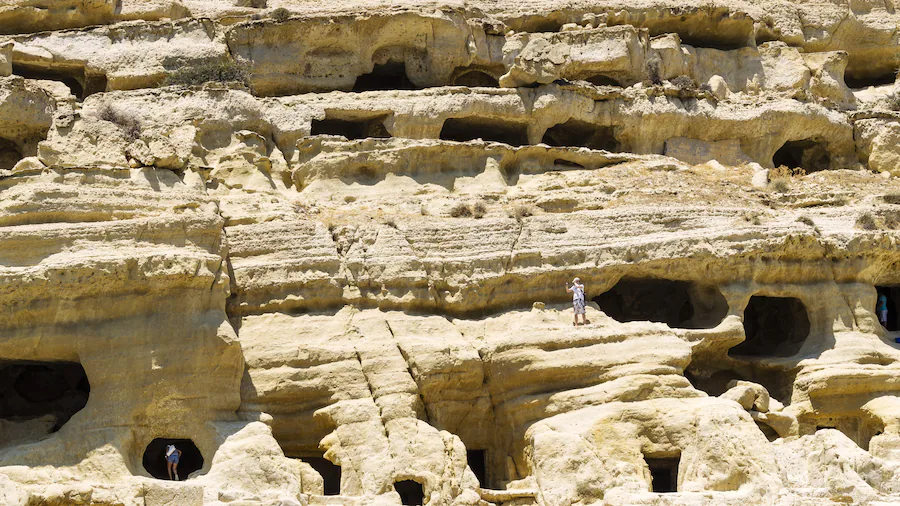South of Heraklion, in a beautiful setting between the Messara Plain and Ida Mountain, you will find the captivating Palace of Phaistos. This Minoan palace is the second-largest in Crete and was one of the region’s most important archaeological discoveries.
The Palace of Phaistos was built and destroyed twice. Originally founded by King Minos around 2000 B.C., the palace was ruled by Minos’ brother Radamanthys until it was destroyed by an earthquake. The structure that was built in its stead was then destroyed by invaders in the 15th century B.C. Still, after excavations that began around 1900, a great deal of the original construction remains. The ruins that you see as you explore the site give a good sense of the palace’s original layout, while still leaving much to your powers of imagination.
Enter the central courtyard from the western side, after climbing a grand staircase that measures some 14 metres (45 feet) in width. The large clay pots you will see were called ‘pithos’, and they were used to store essential supplies such as grain. Admire the original stone paving, which has survived the long millennia, and look out for evocative traces of a red diamond painted on the white of the stone.
Continue on the royal apartments, where the palace’s king and queen kept their chambers. Right beside the king’s chamber you will see a well preserved lustral basin, a curious architectural feature used by the Minoans whereby an L-shaped stairway leads down to a sunken rectangular room, which may have been used for bathing. Visit the courtiers’ lodgings and the artisans’ workshop and look out over the gorgeous olive groves of the Messara Plain.
The Palace of Phaistos is open every day, and there is a small fee to enter. Phaistos is located some 61 kilometres (38 miles) to the south of Heraklion, easily accessible by car or bus.





